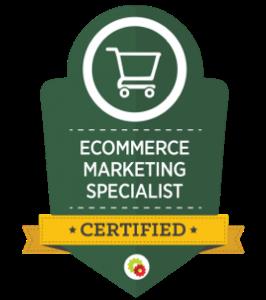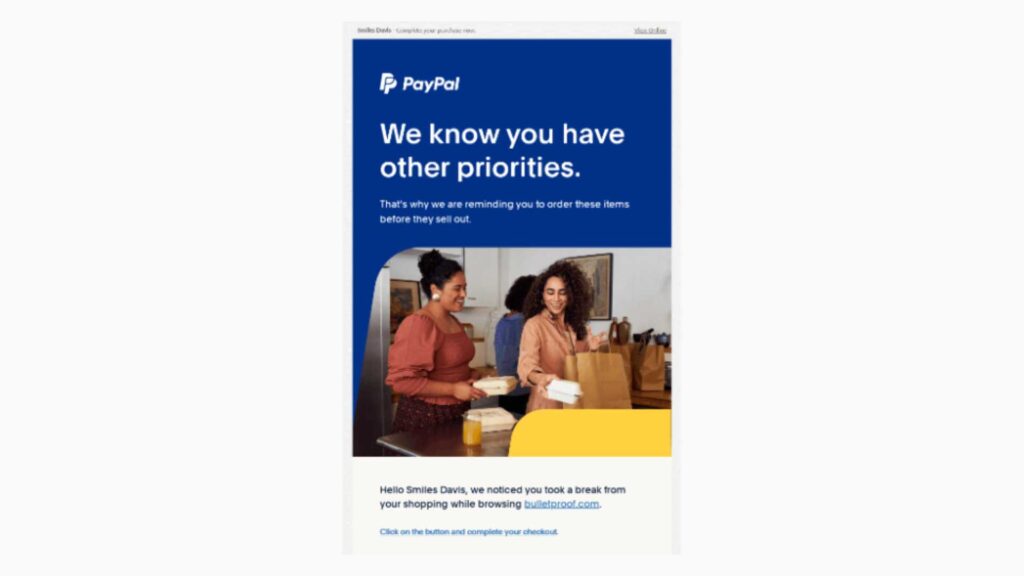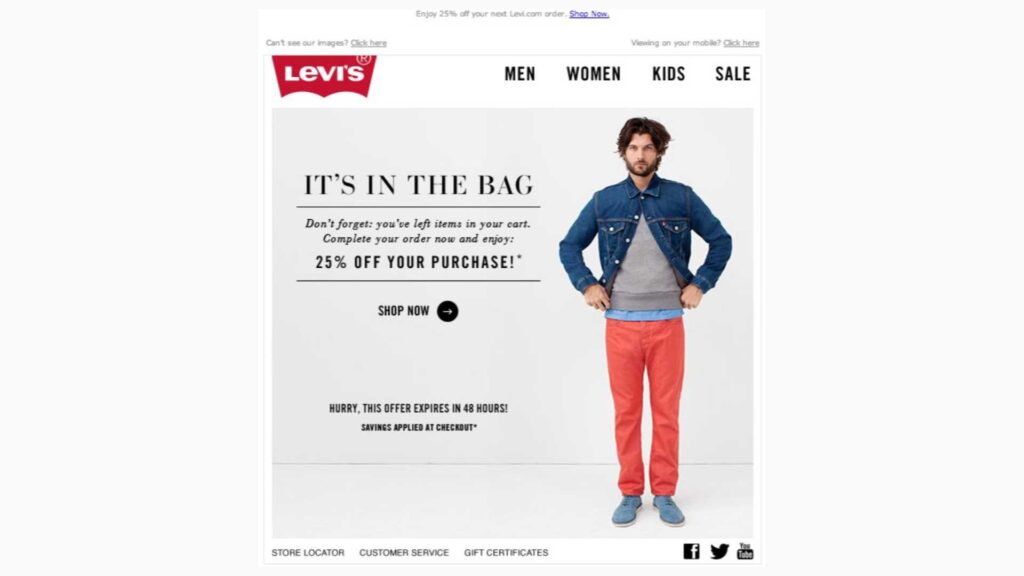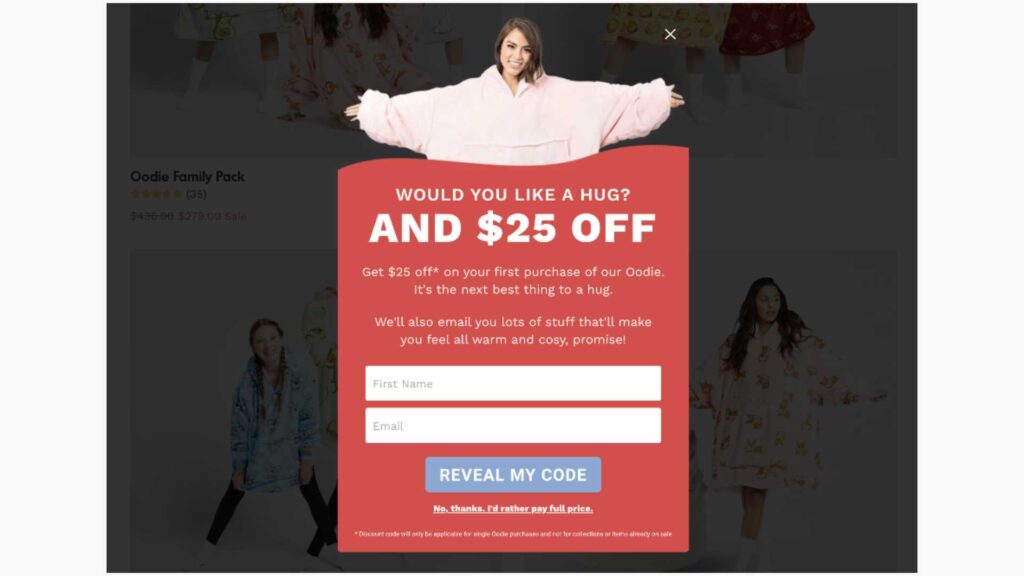
A solitary abandoned cart might seem inconsequential in the bustling digital bazaar that is the eCommerce of today. Yet, when looked at collectively, these unclaimed carts represent a staggering amount of potential revenue slipping away.
What causes a customer, eager to purchase, to suddenly change course? The list of reasons might be endless, but the most common are:
- High shipping costs or long delivery times: rapid and affordable deliveries are the expectation, not the luxury.
- Complex checkout process: a labyrinthine checkout can deter even the most enthusiastic buyer.
- Security concerns: with the world rife with cyber threats, customers need to be assured of their data’s safety.
- Limited payment options: a restricted choice can mean a lost sale, as customers have varied payment preferences.
- Website errors or slow load times: a seamless online experience is paramount; glitches can quickly divert potential sales elsewhere.
The real question, though, is how can businesses address these issues and win back these customers?
The path to resolution is multifaceted, yet incredibly rewarding for those willing to invest the effort. As we dive in, we will explore proven techniques and considerations that not only tackle the root causes of cart abandonment but also provide strategies to reclaim potential revenue.
Proven Techniques for Cart Recovery
The task of addressing cart abandonment is akin to a surgeon wielding a scalpel: precise, calculated, and aiming for effective results. While recognizing the root of the problem is paramount, the real magic unfolds when businesses deploy actionable solutions.
These tried-and-true techniques are not merely strategies but powerful tools that can significantly transform the landscape of eCommerce. They don’t only help retrieve lost opportunities but also fortify their brand’s digital presence.

Become A Certified E-Commerce Marketing Master
The Industry’s Most Comprehensive E-Commerce Marketing Certification For The Modern Marketer. Turn Products Into Profit, Browsers Into Buyers, & Past Purchasers Into Life-Long Customers.
These proactive solutions are some tried-and-true techniques:
Personalized Email Campaigns
In the vast sea of the digital realm, personalized emails act as lighthouses, guiding customers back to their intended purchases. Generic emails easily drown in the cacophony, but those tailored to an individual’s preferences stand out, signaling care and attention. Here’s a short how-to:
- Craft tailored content — beyond just mentioning the product left behind, consider integrating aspects of their browsing behavior. Perhaps they looked at a specific category multiple times? Highlighting products from this category can remind them of their initial interest. If they’ve been a repeat visitor or customer, reference their loyalty, maybe even offering them an exclusive deal as a token of appreciation.
- Behavior-triggered reminders — timing is crucial. Sending an email too soon can feel pushy, while waiting too long might mean they’ve lost interest or found an alternative. Optimal timing, often within a few hours to a day, can be the sweet spot. Moreover, making these reminders interactive, perhaps with engaging visuals of the product or an enticing call to action, can further the chances of re-engagement.
- Segmentation mastery — beyond just past purchases, consider segmenting based on how they’ve interacted with your site. Did they read blog posts? Watch videos? Use this information to craft messages that speak directly to their engagement style and preferences.

Time-Sensitive Incentives
The ticking clock of time-sensitive incentives can often be the gentle push customers need to complete a purchase. However, the intricacy of implementing them demands a nuanced approach. The basics include:
- Varied incentives — a diverse range of customers means a variety of preferences. Some are motivated by direct price reductions, while others find value in added benefits. For instance, a discount might appeal to bargain hunters, but a complementary product could entice those looking for added value. Offering loyalty points can be especially effective for repeat customers, making them feel their loyalty is being rewarded. Regularly rotating these incentives and monitoring which ones drive the most conversions can help fine-tune your strategy.
- Strategic timing — beyond just the time of day, consider the customer’s journey. For instance, if they’ve visited the product page multiple times over a week, this might be an indication of high interest but some reservation. A timely incentive, presented during their next visit, could be the catalyst for conversion. Seasonal offers, during holidays or special occasions, can also drive up sales, tapping into the festive purchasing mindset.
- Balancing urgency and pressure — the language of urgency is delicate. While “Only a few left!” can motivate, overuse can lead to skepticism. Authenticity is key. If you’re offering a limited-time discount, maybe provide a brief reason, such as clearing out end-of-season stock, giving customers a rationale they can appreciate.

Engaging Retargeting Ads
The digital space is filled with distractions, and retargeting ads serve as persistent reminders, guiding potential buyers back to their initial interests. Here’s the 101 for retargeting:
- Platform-specific content — dive deeper into the analytics of each platform. For example, Instagram, being visually dominant, might benefit from high-quality images or short videos of the product in use. LinkedIn, with its professional audience, might resonate more with B2B products or services, emphasizing efficiency and value-addition.
- Narrative — building on the idea of storytelling, consider creating a series of retargeting ads that narrate a journey. Begin with reintroducing the product, followed by showcasing its benefits, and culminate in presenting a compelling offer. Customer testimonials, expert endorsements, or even showcasing the product’s origin story can add layers of depth and trustworthiness.
- Budget allocation and ROI — diversify your retargeting budget. While it’s tempting to heavily invest in platforms where most of your audience resides, don’t overlook emerging platforms or ones where competition might be lower. Regularly reviewing metrics like click-through rates, conversion rates, and overall ROI ensures you’re getting the best bang for your buck. Adjusting your strategy based on these insights can result in more effective campaigns.
Optimizing the Checkout Process
The final frontier in the buying journey, the checkout process, demands meticulous attention. Any friction here can swiftly turn a potential sale into a missed opportunity. What you don’t want to miss out on is:
- Intuitive design — elevate the user experience. Incorporate visually pleasing elements like icons that denote each step, or even progress bars to give users a sense of how close they are to completion. Real-time validation, where form errors are highlighted immediately rather than after submission, can prevent user frustration and streamline the process.
- Reducing drop-off points — implement feedback loops. If a user does abandon their cart, consider prompt surveys or pop-ups asking why they chose not to proceed. This direct feedback can be invaluable in identifying and rectifying friction points. Also, offer multiple payment gateways. Some users might prefer direct card payments, while others might lean towards digital wallets or even cash on delivery, depending on your region.
- Mobile-first design — the rise of m-commerce (mobile commerce) demands an impeccable mobile experience. Beyond the basics, incorporate features like digital wallet integration for faster checkouts, image zoom functionalities for better product viewing, and quick customer support access, such as chatbots or live chat, ensuring any last-minute queries or concerns are promptly addressed.
Additional Considerations: User Trust, Delivery Concerns
Beyond the primary strategies lie nuanced layers of consideration that, while subtle, can significantly influence a customer’s buying journey. These are often the finer details that a business might overlook in the broader eCommerce strategy.
However, when addressed with care, they can provide the extra push needed to convert a tentative cart into a confirmed purchase. Here are the most common ones:

- Exit-intent pop-ups: These are last-minute saviors. Just as a user is about to leave the site, an attention-grabbing pop-up can present an offer or remind them of their abandoned cart. For maximum impact, the content should be compelling, the design eye-catching, and the offer genuinely valuable.
- Cart recovery emails: More than just a reminder, these emails serve as a bridge. They can offer insights into what the user might be missing out on, present additional incentives, or provide assurance regarding any concerns the user might have had. Crucially, the timing and frequency of these emails should be optimized — too soon might seem pushy, too late and they might’ve lost interest.
- Social proof: Trust is a currency in the digital marketplace. Showcasing genuine customer reviews, testimonials, or ratings can instill confidence in potential buyers. Additionally, displaying trust badges or security certifications assures customers that their data and transactions are safe.
- Highlighting seamless delivery options: For many, the uncertainty of delivery times and options can be a deterrent. Clearly presenting diverse delivery choices, estimated times, and any associated costs can alleviate these concerns, making customers more comfortable with completing their purchase.
- Advantages of partnering with 3pl companies: Efficient and reliable order fulfillment can make or break the post-purchase experience. Do your homework and find out what is a 3PL — third-party logistics companies can offer better delivery timelines, track packages more accurately, and boost overall customer confidence in the brand.
The beauty of these additional techniques lies in their ability to address the more intricate concerns of customers. While the core strategies tackle broader issues that lead to cart abandonment, these supplementary methods cater to the finer points of the shopping experience.

Become A Certified E-Commerce Marketing Master
The Industry’s Most Comprehensive E-Commerce Marketing Certification For The Modern Marketer. Turn Products Into Profit, Browsers Into Buyers, & Past Purchasers Into Life-Long Customers.
They speak to the subtleties of trust-building, reassurance, and personalized engagement. Together, these refined touches, combined with the foundational techniques, create a holistic approach to counteracting cart abandonment and maximizing e-commerce potential.
Takeaways
Navigating the challenges of cart abandonment is akin to piecing together a jigsaw puzzle. Each solution is a vital piece that, when placed correctly, completes the picture of a successful eCommerce venture.
Addressing cart abandonment is not just about reclaiming lost sales; it’s about understanding and catering to the evolving needs and concerns of the modern shopper. It’s also essential to remember that the digital landscape is ever-evolving — as technology advances and consumer behaviors shift, businesses must remain agile.
Continual testing, adaptation, and learning are crucial. Every interaction, feedback, and metric can offer insights that, when acted upon, can refine and enhance the shopping experience.
The journey to countering cart abandonment may be intricate and demanding, but the rewards — in terms of both revenue and customer loyalty — are well worth the effort. Businesses equipped with knowledge, determination, and a proactive mindset are poised to turn challenges into opportunities and abandoned carts into flourishing sales.
[TAG6]The post Winning Back Abandoned Carts: Effective Techniques for Cart Recovery appeared first on DigitalMarketer.
Frequently Asked Questions
What keeps an entrepreneur motivated?
My greatest motivator is freedom. There are limitations on how much people can earn, save and invest, buy, borrow, rent or drive, eat, sleep, play, and fly in this world. These limits do not apply to us. We are free to pursue our dreams and make them come true.
We must not allow these limitations to dictate our lives. We lose sight of the fact we are in control of our destiny if we do. We are the captains and crew of our ships. We are the architects for our lives.
I am driven to create wealth beyond what I can imagine. To create businesses that surpass the limits of human potential. To create businesses that make a difference in the lives of everyone.
To create more powerful companies than any government, more influential that any religion, longer-lasting than time itself.
That's what keeps me here. My goal is to help entrepreneurs grow their business faster than anyone else. Because when you succeed, everyone wins.
How to motivate yourself as an entrepreneur
Finding someone who is motivated to do the same thing as you is the best way to motivate yourself. Ask someone who is working hard for his goals about how they did it.
Ask for advice, listen and learn, but most importantly, be sure to follow the advice. Admire someone who is successful.
To be that person, do everything you can. Learn from them. Take their advice. Follow their example.
Keep moving forward. Keep moving. Never stop learning. Never give up.
Never listen to anyone telling you that you're not capable. You don't have to believe that there is no way.
You might fail, but it doesn't necessarily mean that you have failed. Failure can make you stronger. To learn more. To push harder.
Failure is just one step on the path to success.
Get started today! Get started today and you will be closer to your goals.
Are you still waiting?
How can entrepreneurs motivate staff?
Motivation can come from anywhere. Motivation doesn't have to come from a specific place. All that matters is that it motivates them. Motivation is important for every business, regardless of whether it's a stick or carrot approach.
The more motivated employees feel, the better they will perform. Give your team the tools they need to feel empowered.
You must create an environment that makes them feel valued. They need to feel valued and able to learn. Where they can contribute ideas without fear of punishment.
It is important to create a culture within your company that encourages employees to flourish and be successful. This is how you keep your top talent happy, productive, and loyal.
To keep the culture alive, reward people who help you succeed. This means bonuses when goals are met, offering training opportunities, increasing pay raises, and providing perks such as health insurance.
Also, you must communicate clearly with everyone. You must ensure that everyone understands the expectations and reasons for them.
Make sure you have written policies and procedures. You should ensure that they are observed by someone.
And most importantly, communicate frequently. Keep your employees informed about the current state of the organization. Let them know about the latest developments and plans.
Communication is key, and you can help your team stay ahead of your competition by looking after them. They will take great care of you.
You could end up spending a lot of money if your employees don't get along well. Research shows that employees who are engaged with their work have higher productivity and profitability than those who struggle for top performers.
It's important to understand that not every employee wants to work at the same pace as others. Some people prefer to work alone, while others enjoy working in teams. You can motivate anyone in many different ways.
Some people may be more responsive to rewards than others, and some might prefer recognition. Whatever works for your company, ensure that it is consistent with its goals.
As the leader, you are responsible for setting the tone. Be open-minded. Listen to your team. Don't forget to listen.
What makes an entrepreneur a success?
There are two types entrepreneurs: those who make a lot of money and those who do not.
The difference between them is how they approach their business. Those who make money concentrate on making more money, while people who make a lot of time work harder to make more.
The desire to have financial freedom is what drives those who make money. Their goal is to become rich and stay rich.
They are motivated by fear and greed. They don't care about the long-term because they know they will have a happy life after they achieve their goals.
These people are often called hustlers. They are focused on the bottom line and seek ways to increase revenue, without regard for quality.
Others make it a full-time job. These entrepreneurs are motivated by passion. They want to create something that is meaningful and will last forever.
They are driven by altruism. They want to do great works. They are passionate about creating services and products that make a difference.
These people are often called dreamers. They are driven by inspiration and vision. They know that success requires hard work, perseverance and dedication.
They are creative, which is the most important attribute of these entrepreneurs. They are constantly looking for opportunities that have never been seen before.
They thrive in the unknown. They are open to spending hours researching new topics. They love to learn new things and are open to new ideas.
They are able to adapt to changes easily. They're not afraid of getting dirty and will do anything necessary to win. They won't accept mediocrity.
Which type are you? Is it a burning desire to make a living or a burning desire to find meaning?
Congratulations if both of the questions were answered "YES", You are an entrepreneur who is successful.
I've met many successful entrepreneurs over the years and noticed one common trait among them: they were driven by passion.
Success isn't measured by just monetary wealth. Their impact is what defines them.
Steve Jobs, for instance, was well-known because of his charitable work but wasn't very wealthy. He didn't even own a house until he was in his mid-40s.
His ability and creativity to create products that transformed the world made him wealthy. This is what defines him.
Your job isn't to accumulate wealth. It's not to amass power or build empires.
Your job is to establish relationships with customers, partners, and other people. To build trust. To assist others in achieving their goals.
To make a difference. This is your legacy. It's not your bank account.
If you are interested in building a legacy that is meaningful, let's get started.
Social Media University will teach you how to generate passive income online. We'll show how to market your business so it grows naturally.
What are the types of entrepreneur motivations?
There are three major types of motivation that entrepreneurs can use. Each type has its own set of strengths and weaknesses.
External motivation is the most popular form of motivation. This motivates people to earn more. This motivation is often triggered by financial concerns.
External motivation is driven by personal interest, ambition, and desire. This type motivation is more goal-oriented.
This is a rare form of motivation. People who have internal motivation don't seek wealth. Instead they pursue other goals such self-development, fulfillment, and service.
People with internal motivation are frequently called "passionate" since they find satisfaction from their work.
Finally, intrinsic motivation is the least popular type of motivation. Intrinsic motivation describes individuals who enjoy and are satisfied working towards a particular goal.
Internal motivation is much more motivating than external or intrinsic motivation.
It comes from the inside. It's based on the belief in certain talents and abilities. These talents and abilities give them the ability to accomplish extraordinary things that no other person could.
We feel fulfilled and happy when we recognize our talents and abilities. We feel like we are doing important work.
In short, intrinsic motivation makes us happy. This happiness is based on the knowledge that we are capable of achieving anything we set our minds to.
This feeling of accomplishment is what keeps us going through tough times.
You might even find it boring if you don’t enjoy what your doing.
Click here to learn more about the motivation of entrepreneurs.
What are the rewards of being an entrepreneur?
Entrepreneurship has many advantages. First, you can become independent. You no longer rely on others.
You are free to pursue your goals and become independent. Because you have similar interests and challenges, it helps you to build relationships with other entrepreneurs.
You gain confidence. You're constantly learning new things as an entrepreneur. This will allow you to be flexible and adapt quickly. You won't be stuck in a rut if you think outside the box.
Everybody can start their business without being bound by any rules or regulations. We're free to decide what we want to do and how we want to live.
We have two options: follow the crowd, or fight it. We can choose to be successful or not. You can choose to win or fail.
It's exhilarating to have freedom. This freedom comes with a lot of responsibility. This is because you are accountable for everything happening within your company once you have taken on this role.
You must be able to take risks if you want success. Do not be afraid to try out new things. If you're willing to try to learn from your mistakes, you'll eventually reach your goal.
These lessons will help you to stay on the right track when you embark on your journey.
Remember:
- Entrepreneurship can be a way to live your life.
- When you run your own business, you're the boss.
- Be aware of the following trends
- The measure of success is not money, but freedom.
- Balance your personal and professional life.
- Set clear expectations.
- Always be open with your team.
- Remember, if you want something to happen, you've got to do something about it.
Statistics
- "If you improve by just 1% every single day, in several months, you will have improved by 100%. (carolroth.com)
- “Life is 10% what happens to you and 90% how you react to it.” (oberlo.com)
- "Most of the time when people ask me about motivation, 80 percent of the time, I attribute it to gratitude. (entrepreneur.com)
- That means for $150,000, you could have bought 10 percent of Airbnb." (entrepreneur.com)
- I shifted my motivational point from something huge (and undefined) to improve by just 1% each day. (carolroth.com)
External Links
[TAG23]
[TAG25]
[TAG28]
- This is the inspiring quote Jeff Bezos keeps on his fridge
- Richard Branson, a Billionaire: These are my top 10 secrets to success
[TAG31]
How To
What are 3 things entrepreneurs need to stay motivated?
Entrepreneurs need to be motivated. There is no motivation without which there can be neither drive nor determination to succeed. But what motivates you?
We stay motivated for three reasons:
- We love our business
- Our vision/mission is larger than ourselves
- We have a passion to help others
You can stay motivated by finding ways to tap into those motivations. We feel great pride and satisfaction when our business succeeds. We are more satisfied when we have a vision and feel like we are making a real difference in the lives of others. We feel fulfilled when we feel a strong desire for helping others.
According to Dr. John Cacioppo Ph.D., Emeritus Professor at the University of Chicago's study, it is the best way to motivate oneself to think about the things you care about. His book, "Loneliness," states that "the best source for motivation is caring about someone." This will make us more engaged and motivated. This makes sense because if we care about something, then we will be more passionate to do it.






